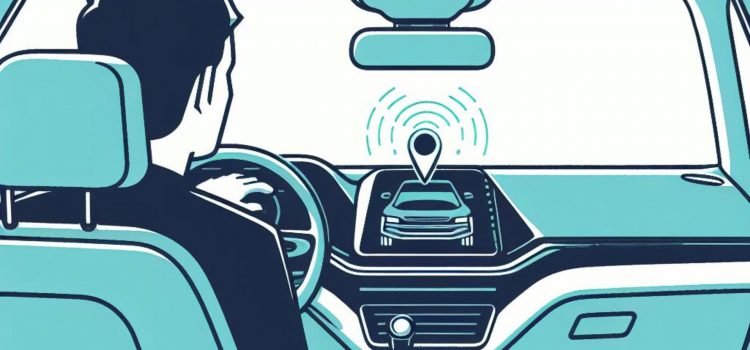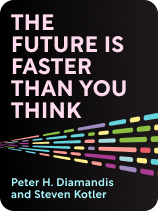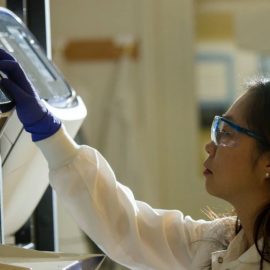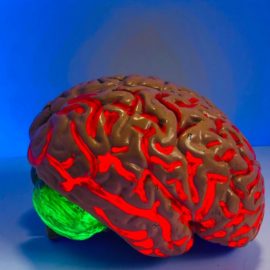

This article is an excerpt from the Shortform book guide to "The Future Is Faster Than You Think" by Peter H. Diamandis and Steven Kotler. Shortform has the world's best summaries and analyses of books you should be reading.
Like this article? Sign up for a free trial here.
How does technology affect transportation? Will everyone be driving autonomous vehicles in the future?
According to Peter H. Diamandis and Steven Kotler, advances in sensor technologies, AI, and other technologies will allow us to travel faster and farther. They’ll also create opportunities to explore and inhabit new spaces.
Read below about the impact of technology on transportation.
Unprecedented Travel Speeds
The authors write that we’ll be able to travel greater distances in significantly less time, increasing our access to resources and changing where we live, work, vacation, and so on. The authors outline some future modes of transit that will contribute to the impact of technology on transportation:
1. Autonomous vehicles: The authors predict that self-driving vehicles that don’t require human intervention to get from one location to another will soon be the dominant form of transportation. These vehicles will be made possible through the convergence of technologies such as sensors and artificial intelligence. Eventually, this shift will extend to autonomous flight vehicles, opening up a new transportation network in the sky.
(Shortform note: The Society of Automotive Engineers (SAE) defines five levels of automated vehicles for measuring the progress of self-driving technology. Levels 0 to 2 have features like cruise control but require an active, engaged driver who takes ultimate responsibility for the vehicle’s operation. At Level 3 (also known as “conditional automation”), cars can drive on their own under certain conditions but will alert drivers to take control when needed. As of 2023, Mercedes-Benz became the first to offer level 3 automation with its Drive Pilot system. At level 5, cars will be fully automated under any conditions—perhaps even self-piloting through the sky as Diamandis and Kotler anticipate.)
2. High-speed travel: At present, airplanes are the fastest mode of transportation. However, Diamandis and Kotler argue that advancing technologies will soon change this. Visionaries like Elon Musk (the founder of SpaceX) have been working to make high-speed trains and rocket travel a reality. SpaceX’s Starship is one example of this ambition, aiming to enable high-speed travel across Earth—allowing you to travel across the globe within an hour, for instance.
(Shortform note: Developing high-speed transportation, like any other technological innovation, is often a process of trial and error. In 2023, SpaceX tested the Starship rocket for the first time, conducting its first test launch in April and its second in November. Both launches ended in explosions. However, many consider the second launch a success, as SpaceX engineers were able to address key issues that afflicted the first launch.)
New Real and Virtual Spaces
Diamandis and Kotler write that exponential technologies will also allow us to inhabit new spaces. For example, advances in structural engineering and materials science could allow us to design and construct sustainable cities that float on the ocean. These cities could provide additional living spaces for the growing global population.
(Shortform note: OCEANIX, a New York maritime tech company, partnered with the South Korean city of Busan to create the world’s first prototype of a floating city. The city is made up of interconnected neighborhoods and accommodates 12,000 people. It’s designed to be dynamic and adaptable, allowing for future growth or shrinkage as required, and can generate all its required operational energy on-site via solar panels. Each neighborhood will handle its own water treatment and replenishment, waste reduction, and even urban farming.)
Perhaps the most revolutionary expansion of “livable space” may come from technological breakthroughs in virtual reality. As VR becomes increasingly sophisticated, we may spend more time in simulated environments—whether we’re shopping or holding a meeting with colleagues. We may even one day be able to use brain-computer interfaces (BCIs) to link our minds with computers.
| The Importance of Information in a Digital Future In The Singularity Is Near, computer scientist Ray Kurzweil shares Diamandis and Kotler’s prediction that existence will one day be just as digital as it is physical—if not entirely digital. He cautions that if we use technologies like brain-computer interfaces to connect our brains directly with computers, it’s crucial we carefully manage how information is handled and stored. This is because in a fully digital world, our entire reality (including our digital selves) would be made up of information mapped from the world and our brains—for instance, our knowledge, personality, and memories. Any accidental or deliberate change made to this data could then change whatever reality we reside in and who we are. Similarly, if sensitive information were to fall in the wrong hands, we might even be replicated in the physical world through the use of nanotechnology without our knowledge. Thus, in a digital future, maintaining the integrity of information becomes vital for safeguarding our reality and identities. |

———End of Preview———
Like what you just read? Read the rest of the world's best book summary and analysis of Peter H. Diamandis and Steven Kotler's "The Future Is Faster Than You Think" at Shortform.
Here's what you'll find in our full The Future Is Faster Than You Think summary:
- Why change and technological progress are occurring at breakneck speed
- How cutting-edge technologies will revolutionize the ways we live and work
- How entertainment will change from being passive to active






